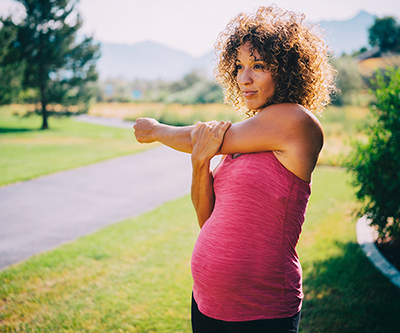
Recreational physical activity during pregnancy can benefit the health of both mother and child. However, the mechanisms underlying links between maternal physical activity during pregnancy and childhood health outcomes remain unclear. Emerging data suggest a role for placental epigenetics—heritable changes in DNA that do not involve alterations to the underlying sequence.
Researchers led by Drs. Edwina Yeung and Cuilin Zhang from the Epidemiology Branch analyzed data from 298 participants in the Fetal Growth Studies-Singletons. Women reported their levels of physical activity before and during pregnancy. Scientists examined patterns of DNA methylation—an epigenetic change that can affect the degree to which genes are turned “on” or “off”—in placenta samples obtained at delivery.
The investigators evaluated links between physical activity and placental DNA methylation in this racially and ethnically diverse group of study participants. Their analysis accounted for numerous other factors related to physical activity, such as maternal age and body mass index before pregnancy.
They found that recreational physical activity both before and during pregnancy was associated with several DNA methylation changes in placenta. Notably, these associations differed at various timepoints during pregnancy. The largest change in methylation occurred at a site in the TIMP2 gene, which provides instructions for a protein that is critical for dilation of blood vessels, formation of the placenta, and expansion of the uterus during pregnancy. These findings will inform efforts to unravel the mechanisms underlying the impacts of physical activity on placental health.
Learn more about the Division of Population Health Research (DiPHR): https://www.nichd.nih.gov/about/org/dir/dph
 BACK TO TOP
BACK TO TOP